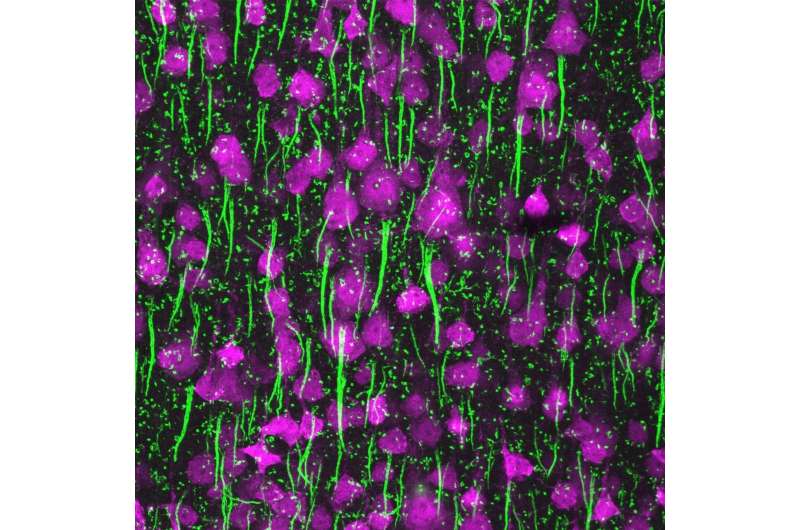Different lengths of the green signals means different triggers sites. Credit: Netherlands Institute for Neuroscience
To process information in our brains, nerve cells produce brief electrical impulses, called action potentials, triggered from one highly specialized region. Research from the Netherlands Institute for Neuroscience, together with researchers from Heidelberg University and the University of Göttingen in Germany, now show that the electrical trigger sites surprisingly change with experience; they are either becoming smaller with increasing number of experiences and, vice versa, they grow larger when less input arrives in the brain. The results were published in Nature Communications.
Exploring the environment
Rodents learn about their environment by moving their highly sensitive whiskers, with which they touch objects and, for example, identify food sources. To examine whether brain cells change with the number of sensory experiences, researchers from the Kole group, placed mice in an environment in which many new objects were present, with variable textures, shapes, and possibilities to explore. As a result of such a rich environment, brain cells shrank the length of the trigger site. With the shortening, which occurred even within a few hours, nerve cells also showed a lower rate by which electrical impulses were generated. In contrast, when sensory stimuli were not able to reach the brain because the whiskers were impaired, the trigger sites grew longer and produced more electrical impulses.
Plasticity
Structural changes of neurons are a phenomenon that scientists call 'plasticity' and form the basis of why we keep learning during our entire life and can adapt to an ever-changing world. Previously, it was thought that anatomical changes in nerve cells are primarily occurring at the contact sites called 'synapses'. However, the present study shows that plasticity also occurs at the trigger sites for electrical impulses, which may be important to balance the amount of brain cell activity and prevent overexcitation. The question also remains which molecules are producing this type of plasticity.
More information: Nora Jamann et al, Sensory input drives rapid homeostatic scaling of the axon initial segment in mouse barrel cortex, Nature Communications (2021). DOI: 10.1038/s41467-020-20232-x
Journal information: Nature Communications
Provided by Netherlands Institute for Neuroscience
























